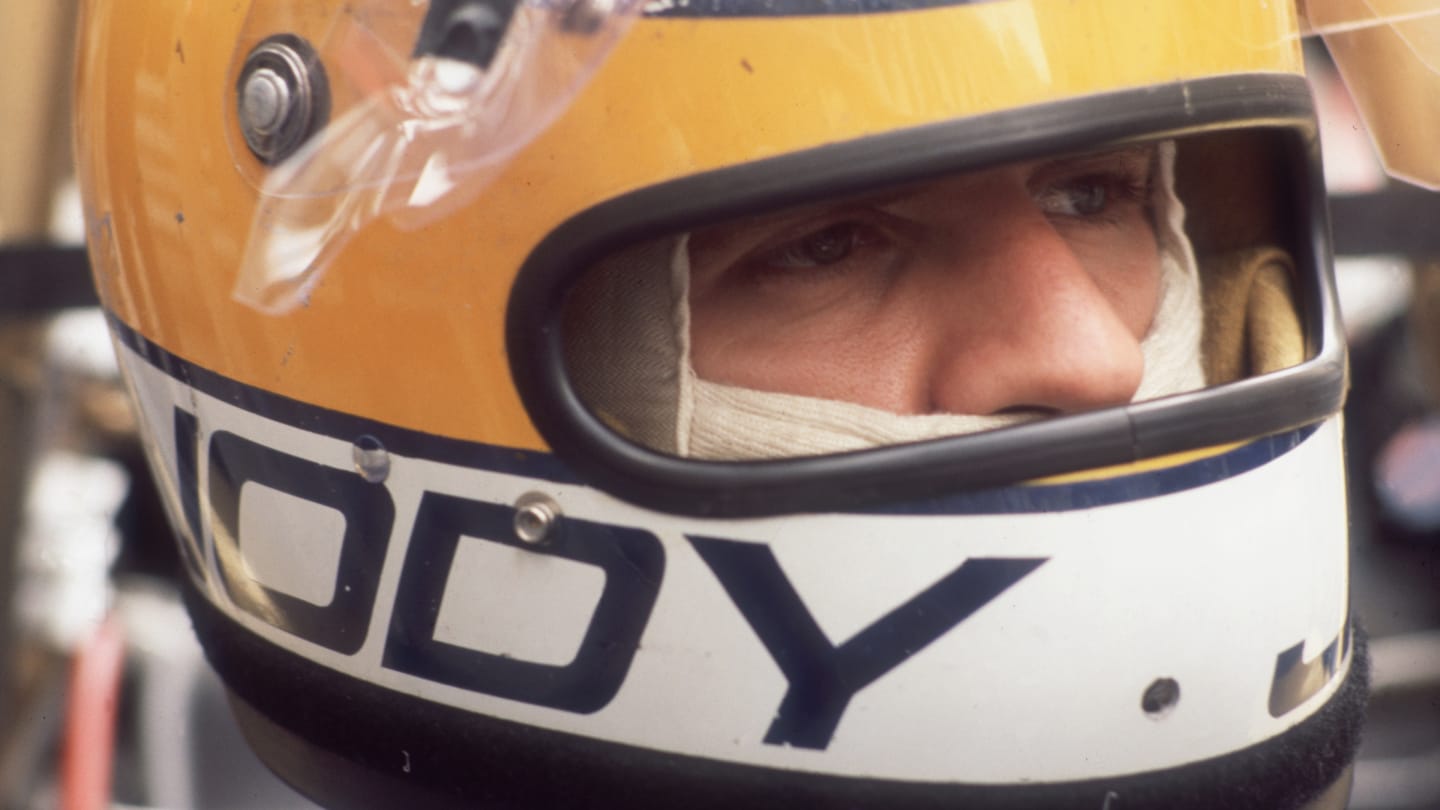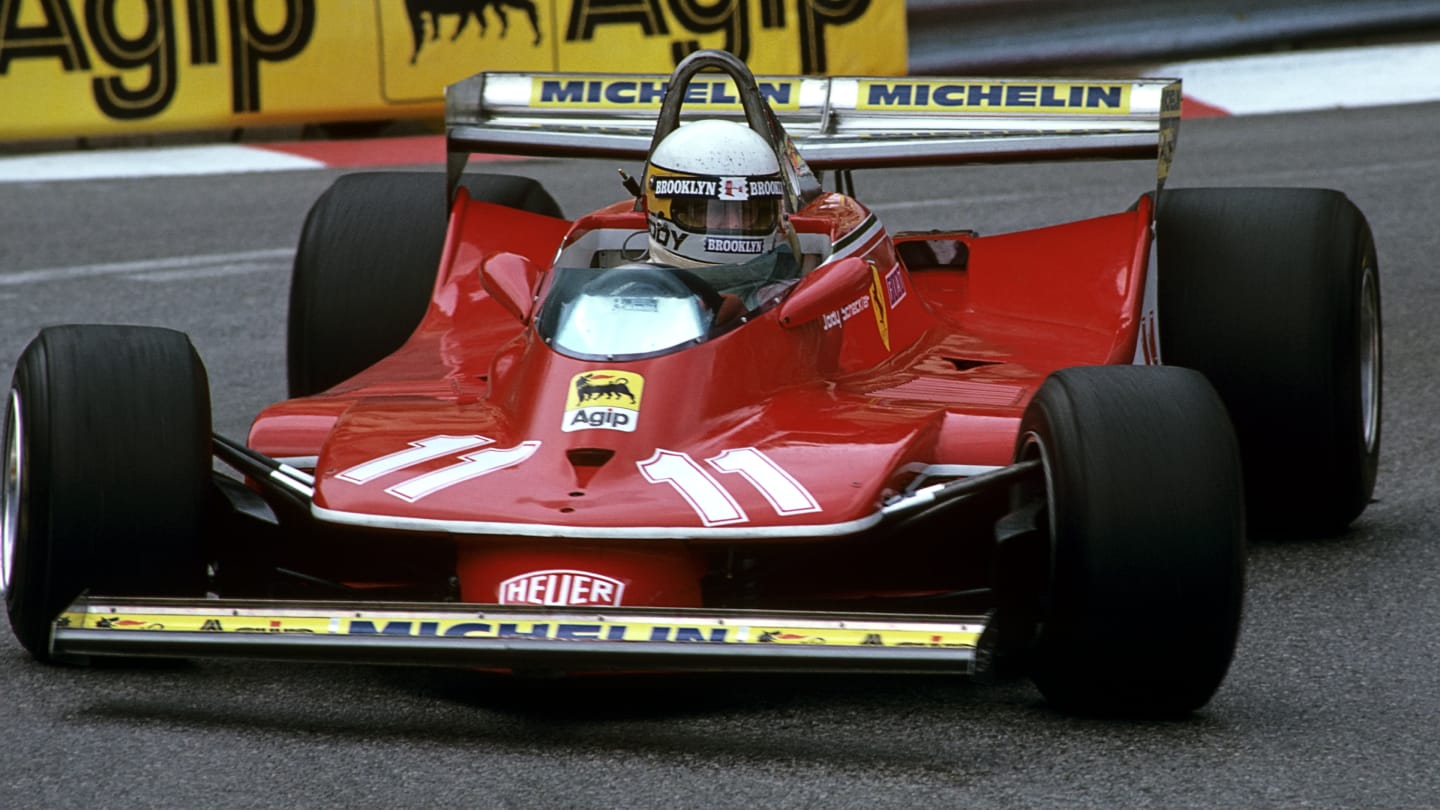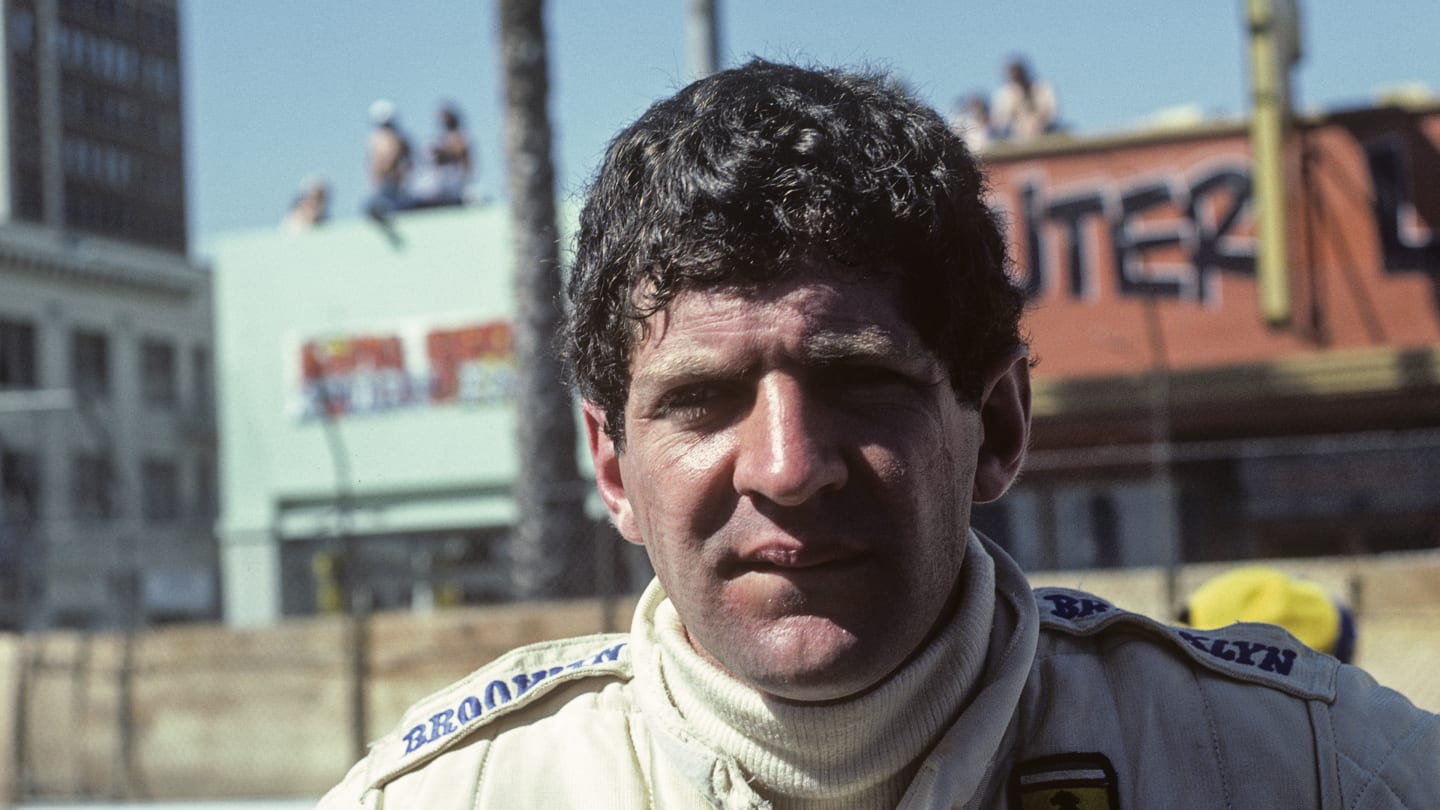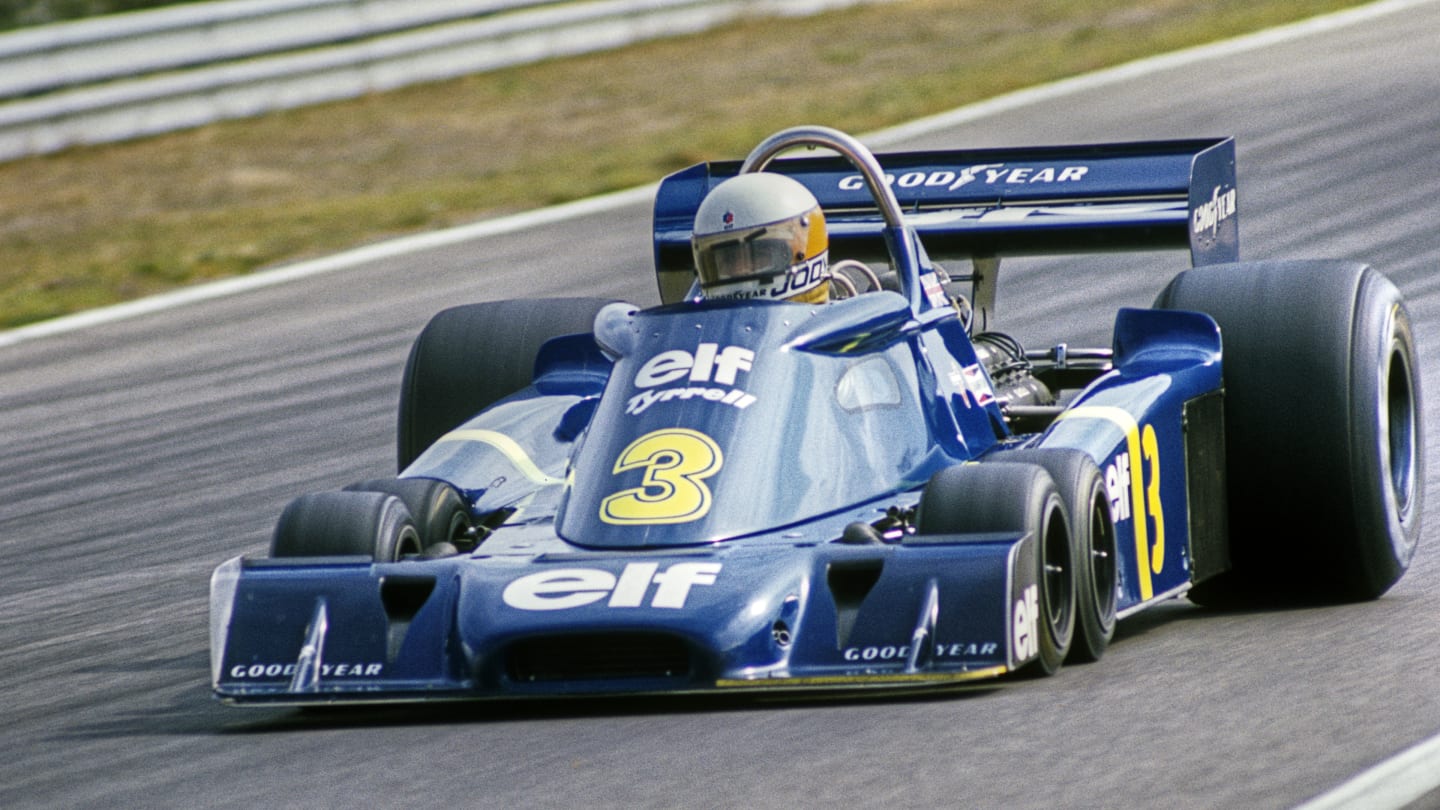
HALL OF FAME - 1979
Jody Scheckter

He exploded on the scene as an erratic, crash-prone wild man whose desperate deeds of derring-do put himself and his peers in great danger. Jody Scheckter became infamous for causing one of the biggest accidents in Formula 1 history, after which there were demands that he should be banned from the sport. Instead, he straightened himself out and concentrated his considerable talent and ambition on becoming World Champion. Having achieved his goal (with Ferrari, whose next champion would be 21 years in the future), he quickly retired.
Jody Scheckter was born on January 29, 1950, in East London, South Africa, where his father owned a Renault dealership. Jody worked there as an engineering apprentice and learned to drive when he was quite young, but only knew one speed: flat-out. This attitude naturally led him to try racing, at first on motorcycles and then in saloon cars. In his first national race he was black-flagged off the circuit for dangerous driving. Eventually he learned to temper his aggression with enough skill to become a regular winner. In 1970 he won the South African Formula Ford series and with it the Driver To Europe scholarship. With his prize - 300 pounds cash and air tickets to England for himself and his wife Pam - Jody set out to become the best driver in the world. That was always his goal but the route he took to achieving it was at first strewn with wreckage and many wondered if he would survive.
In England the 'South African Wild Man' quickly made a name for himself as both a spinner and a winner in the Formula Ford and Formula 3 machinery he threw around fearlessly yet crashed with alarming frequency. His rugged features and pugnacious personality seemed to match his headstrong driving. With woolly hair and trademark frown he spoke bluntly and had a fierce temper. Yet his speed was undeniable and his car control, whenever he was able to maintain it, could be brilliant. Far-sighted talent-spotters thought the diamond-in-the-rough of a driver only needed polishing to become a Formula 1 force to be reckoned with. McLaren gave him a trial run in the 1972 US Grand Prix, then contracted him for occasional rides in a third car in the 1973 season.

Scheckter at the wheel of the Ferrari 312T4 on his way to victory in the 1979 Grand Prix of Monaco
In the French Grand Prix Jody immediately impressed by taking the lead at the start. Then came a collision with Emerson Fittipaldi's Lotus, which sent the Scheckter McLaren somersaulting off the circuit and the reigning World Champion into a towering rage. This madman, fumed Fittipaldi, is a menace to himself and everybody else and does not belong in F1. The anti-Scheckter movement gained considerable momentum in his next race, the British Grand Prix at Silverstone. Jody had qualified sixth and was fourth on the opening lap when the crowded field of 28 cars converged on the 150 mile an hour Woodcote corner. The Scheckter McLaren went out of control and spun wildly through the middle of the pack before thumping hard into the cement wall in front of the Silverstone pits. As Jody clambered out of the smoking wreckage, completely unhurt, the chaos he had caused continued for some time. Great clouds of smoke and dust obscured the details but there were glimpses of cars flying through the air and bits of wreckage rained down over a considerable area. Mercifully, the only injury was a broken leg suffered by the Surtees driver Andrea de Adamich, but eight cars had been totally destroyed and Jody Scheckter was held responsible for causing the most massive Formula 1 accident of all time. The Grand Prix Drivers Association's demand for his immediate banishment was put off when McLaren agreed to "rest" its rash rookie.

Scheckter pictured at the 1980 United States West Grand Prix at Long Beach
When he returned, for the Canadian Grand Prix at Mosport Jody immediately collided with Francois Cevert's Tyrrell, putting them both out of the race. Nevertheless, following this contretemps Ken Tyrrell signed Scheckter to replace the retiring Jackie Stewart and become Cevert's team mate for 1974. Sadly, this partnership would never be, as Cevert was killed in a horrible accident during practice for the next race, the US Grand Prix at Watkins Glen. Jody Scheckter was the first driver on the scene and what he saw that day had a profound effect on the rest of his racing life. In fact, Jody said, "From then on all I was trying to do in Formula 1 was save my life."
Ken Tyrrell helped him iron out the kinks that remained in his racing repertoire, insisting he must stop making mistakes and concentrate on finishing races. With his aggression, and his Tyrrell, under more control Jody won two Grands Prix in 1974 and finished third in the standings. He stayed with Tyrrell for another two seasons, winning a race each year, but felt that Ken Tyrrell's machinery was not up to the task of winning the championship he so craved. He switched to the new Wolf Team in 1977 and won three races but then, after finishing second overall to Ferrari's Niki Lauda, Jody decided the Italian cars were the way to go and Enzo Ferrari happily hired him. "He is a fighter who does not burn himself up by coming on too strongly at the beginning," Enzo said of the mature version of Jody Scheckter, "but measures himself fully and evenly throughout a race."

Scheckter is the only driver ever to win a Grand Prix in a six-wheeled car - the Tyrrell P34 in Sweden in 1976
Enzo's 1978 cars were not of championship calibre but it all came together the next year when, with the legendary Gilles Villeneuve as his team mate, Jody achieved his ambition. Jody and Gilles became close friends and thrived in a good-natured rivalry that produced three race wins apiece. The South African countered the French Canadian's superior all-out speed with a more conservative points-collecting strategy that paid off and made him the 1979 World Champion.
"This Scheckter," Enzo Ferrari said, "has shown himself to be a wise co-ordinator of his own capabilities and potential, a man who plans things with the final result in mind, or for safety. I'm not sure."
In Jody's mind he had achieved the only result that mattered. He coasted through the 1980 season with Ferrari to fulfil his contractual obligations then retired at the age of 30. Already rich from racing, he became even wealthier as an astute businessman in fields far removed from Formula 1 racing. In America he founded a high tech security company then sold it and took time out to shepherd the racing careers of his sons Tomas and Toby before embarking on an organic farming enterprise in England.
Text - Gerald Donaldson